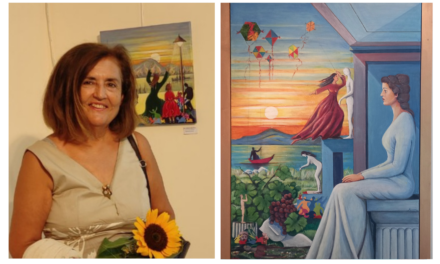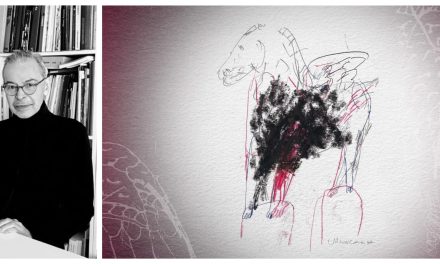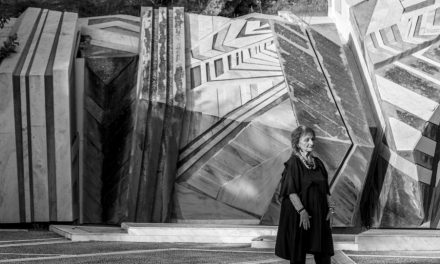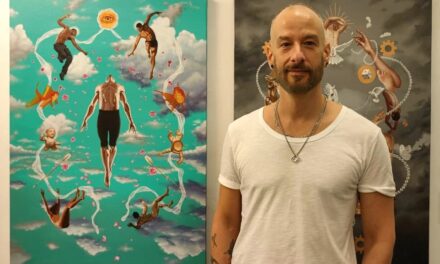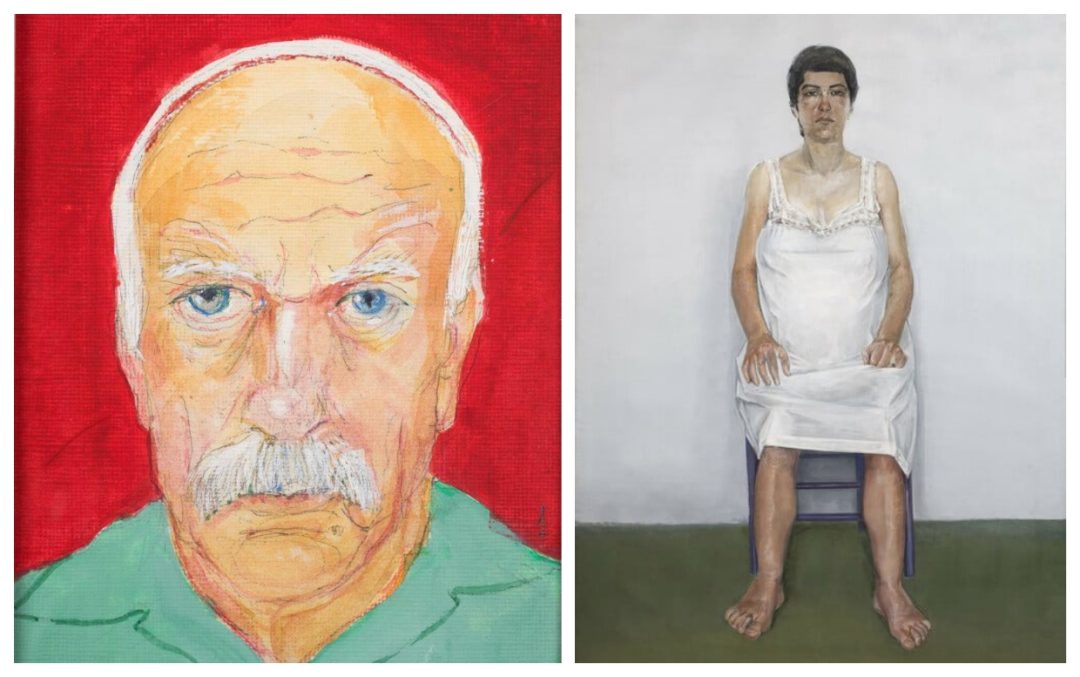
The Basil and Elise Goulandris Foundation presents a retrospective exhibition dedicated to Chronis Botsoglou at the Museum of Contemporary Art in Andros, titled “The uncompromising sincerity of empathy“. Chronis Botsolgou (1941-2022) was one of the most important figurative artists of contemporary Greek art, among the leading artists of the late modernism and its subsequent realizations in Greece. The exhibition at the Cycladic island of Andros features more than 100 oils, pencil drawings, pastels, watercolours, bronzes, brasses and plasters from 1953 to 2018, showcasing more than sixty-five years of an extremely productive artistic career.
A worthy successor to the masters of Vincent van Gogh, Alberto Giacometti and Francis Bacon, Botsoglou placed the human being at the center of his work. His works are in the image of his written texts: they were born out of asceticism, suffering and a genuine concern for honesty. This unrelenting honesty, which he often imposed on himself, was however always accompanied by empathy. As the curator of the exhibition Maria Koutsomallis said at the press conference presenting the exhibitions: The element of fragility, of vulnerability that emerges from his works, does not relate only to the person that is depicted. It also intimidates the viewer, who facing this unyielding honesty, recognizes himself in the material the artist has used”.
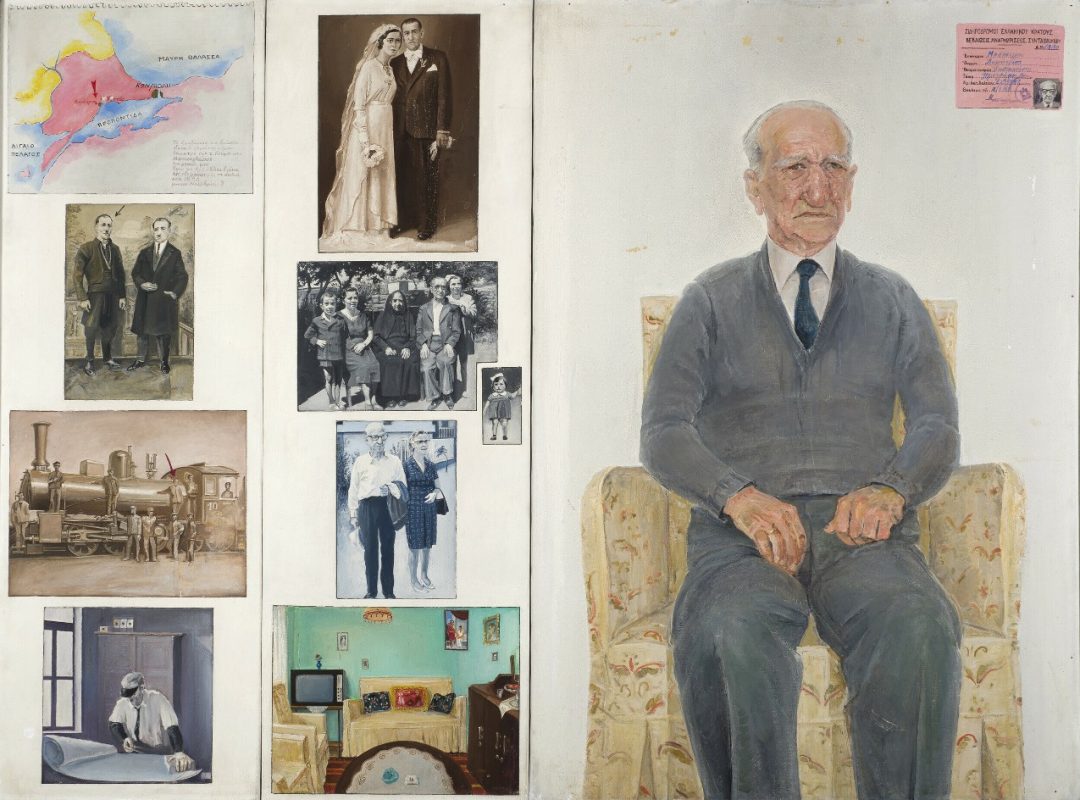
This love for the world of the living, entwined with tenderness completely free of any kind of condescension, is repeated in a series of themes that Botsoglou loved. These pictorial chapters, as the artist himself defined them in his written texts, especially in his collection ‘The Colour of Study’, are all present in the retrospective. Thanks to the generous participation of the family of the painter, who passed away last year, as well as many collectors, individuals and institutions, it has been possible to bring together both the artist’s landmark works and as well as many other works that are being exhibited for the first time.
Botsoglou was born in 1941 in the northern Greek port city of Thessaloniki to a family of refugees from Asia Minor, and worked very hard in shaping his personal idiom. This journey of self-discovery is underscored in the show..He studied in Athens at the School of Fine Arts with Yiannis Moralis and continued his studies in Ecole Superieure des Beaux – Arts in Paris.
His studies at the School of Fine Arts in Athens, and then in Paris, provided him with the academic basis he needed to find his way and paint the first youthful works exhibited in the exhibition. In the landscapes of Lesvos he balances inorganic matter, sky and vegetation, managing to render the colours of the Mediterranean with exceptional fidelity. The 1970s are defined by the passage from neo-realism to existentialism. He joined many artistic groups, trying to integrate everyday life into art and approached the New Realism movement, which placed photography at the basis of artistic inspiration. An important theme of the exhibition is erotica. Eroticism is a central axis of Botsoglou’s art. In the 1980s, man becomes the centre of his art, especially at the time when he was working in an old lyotribe as an ascetic.
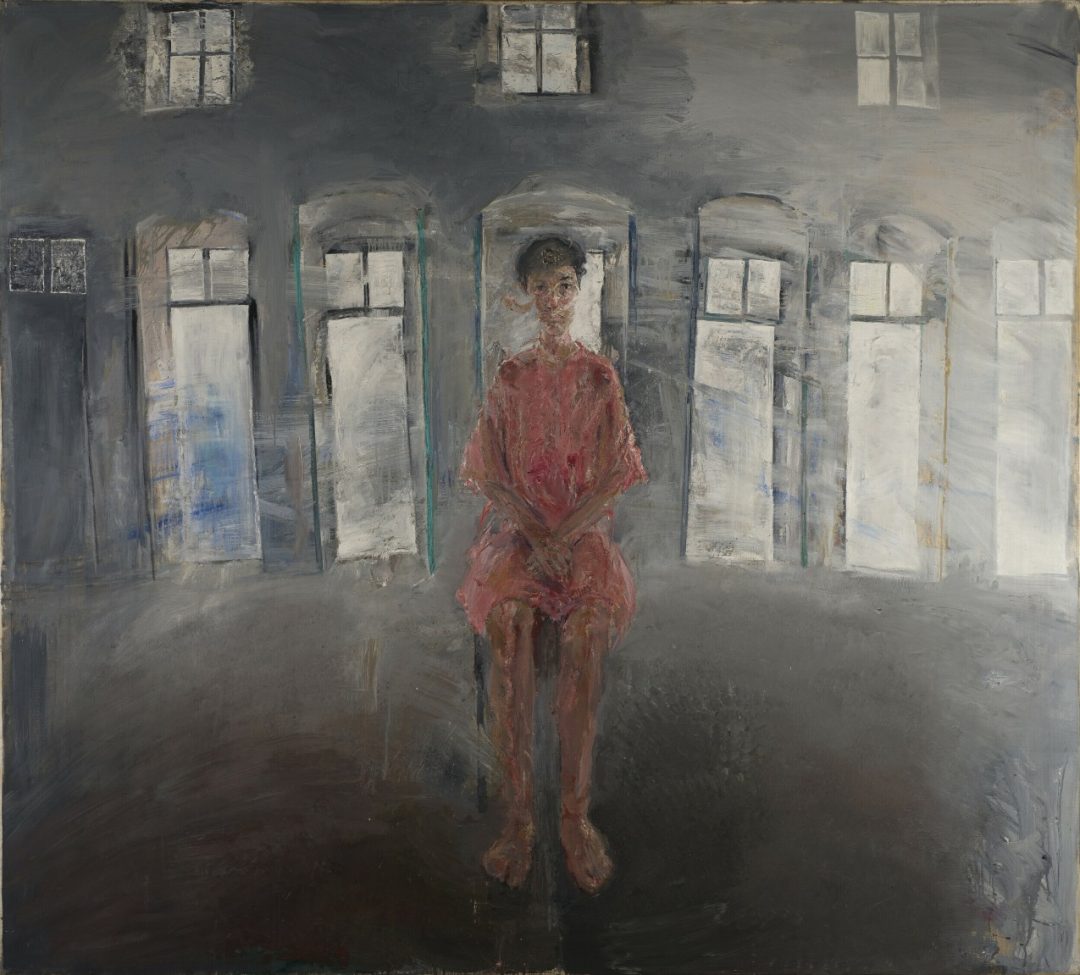
The exhibition also has many self-portraits from various periods. In 1993 Botsoglou began the Nekya series, which he completed in 2000, a polyptych consisting of 26 works. The source of inspiration is Rhapsody l of the Odyssey, in which Odysseus – who is desperately trying to summon the dead seer Tiresias from the underworld to find out whether he will return to Ithaca – is initiated by Circe into the ritual of necromancy, which consists of the temporary return of the dead from the realm of Hades.
In this way, Botsoglou paints his memories of persons who were dear to him, such as his parents, his uncle and aunt, the poet Nikos Kavvadias, the painters Nikos Paralis, Lefteris Kanakakis (as”Fisherman of Santorini”) and Asadur Baharian. In the first portrait of the series, The Necromancer, he gives his own characteristics. In 2003 Botsoglou began the series References, in which he pays tribute to his teachers by creating fictional portraits of them. Although among his influences he has already mentioned many names of every nationality and era, in this series he limits himself to representations of Giannoulis Chalepas, Giorgos Bouzianis, Vincent van Gogh, Chaïm Soutine, Alberto Giacometti and Francis Bacon.
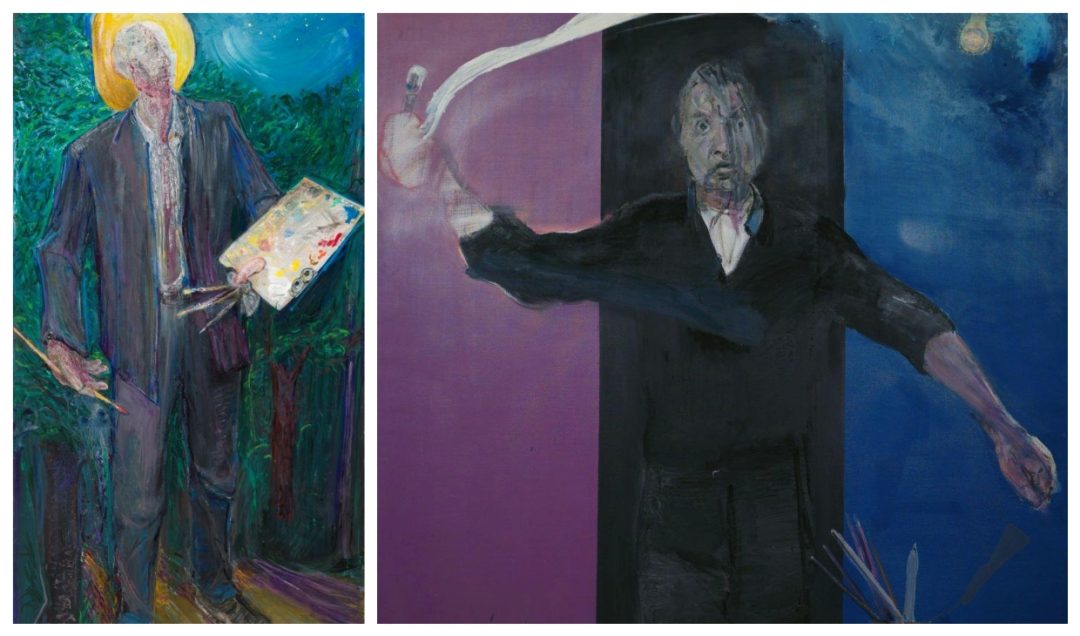
The tone of the catalogue, as well as the exhibition itself, is set by “Brotherly Thoughts” an imaginary dialogue between Botsoglou and his teachers, which highlights the brotherhood between the artists in terms of their concerns and expectations, as well as the way they saw the world.”I paint people because they are the most beautiful thing there is,” Botsoglou used to say. Newspaper Kathimerini reports on the exhibition: “Botsoglou was equally uncompromising in his search for truth both in his form and in his body. His paintings do not embellish. They dig to the core of the models revealing the innermost thoughts, the weaknesses, the decay, the decay.
At least 15 works in the exhibition are portraits, which evolve from the portraits of youth and “Self-Portrait” (1967) to “Kneeling Man” (1983) and “Necromancer”, the first work in the series “A Personal Virtue” ( 1993-2000) –a project consisting of 26 works, 13 of which are presented in the exhibition. In addition to himself, Botsoglou paints in this particular series his memories of people who were dear to him: his parents, his uncle and aunt, the painters Nikos Paralis, Lefteris Kanakakis (as “Fisherman of Santorini”) and Asadour Baharian. The “Nekyia” series, inspired by rhapsody λ of the Odyssey, helped him to see again his whole relationship with memory. “In order to be able to do this “Nekyia” I have to stop remembering. When you remember, the dead rise, and that keeps them silent,” he wrote. Botsoglu knew that memory is weaker than imagination, and that the latter complements the former by helping us understand people better and more lovingly. “When I finished Nekyia, after I also painted the shadow of Nikos Kavadias, and I left the studio, I started to cry, I cried uncontrollably, and convulsed non-stop for a long time without a specific reason […]. Then I felt the end of an era […]”, he wrote in “Color of study””.
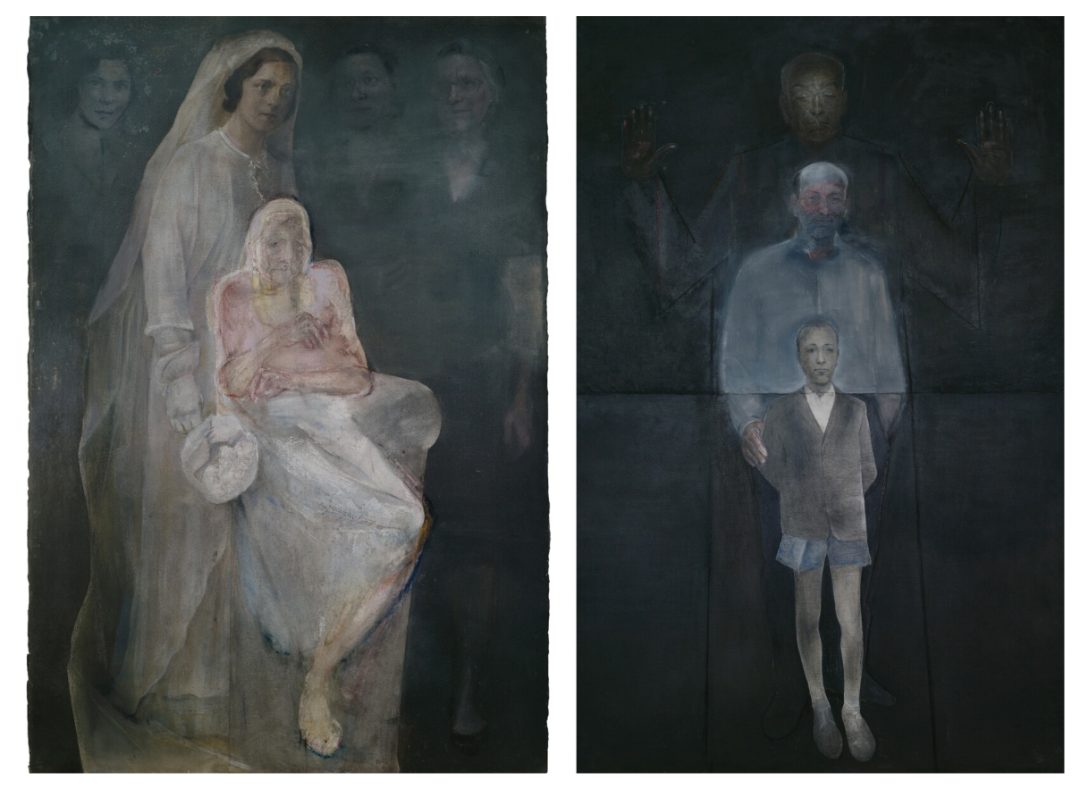
The exhibition, running until October 1st. is accompanied by a bilingual catalogue, in Greek and English, featuring texts by the exhibition’s curator Marie Koutsomallis-Moreau, a detailed chronology, statements by Botsoglou and photographs, most of them unpublished, provided by the artist’s family.
Short Bio
The painter, engraver and sculptor Chronis Botsoglou was born in Thessaloniki in 1941. He studied on a scholarship at the Athens School of Fine Arts (1960-1965) under the artist Yannis Moralis. He was still a student when he held his first solo exhibition in Athens (1964, Center for Technological Applications), with works that revealed influences from Bouzianis. He continued his studies at the Έcole des Beaux Arts in Paris (1969-1972, on a state scholarship). He presents his work in consecutive thematic axis, its main features being existential references, the exhaustive processing of the form and the physicality of the painting material. Often his paintings coexist with sculptural works.
In 1989 he was elected professor at the Athens School of Fine Arts, where he served as Rector (2001-2005) and taught until 2008. He held more than twenty-five individual and dozens of group exhibitions in Greece and abroad. He participated in the Sao Paulo Biennale (1969) and the Engraving Biennale (Heidelberg, 1988). His retrospective exhibitions were presented at the Municipal Gallery of Rhodes (1986), the Vafopouleio Spiritual Center (Thessaloniki, 1991), the Cyclades Gallery (Ermoupolis, 2008) and the National Museum of Contemporary Art (Athens, 2010). He illustrated poetry collections and collaborated with writers and theorists, regularly publishing his writings. He has published three books and an album of computer-generated works (2007). In 2009, a monograph on his work was published.
I.L., with information from visitgreece.gr, goulandris.gr and Kathimerini.gr

TAGS: EXPRESSIONISM | MODERNISM | PAINTING

